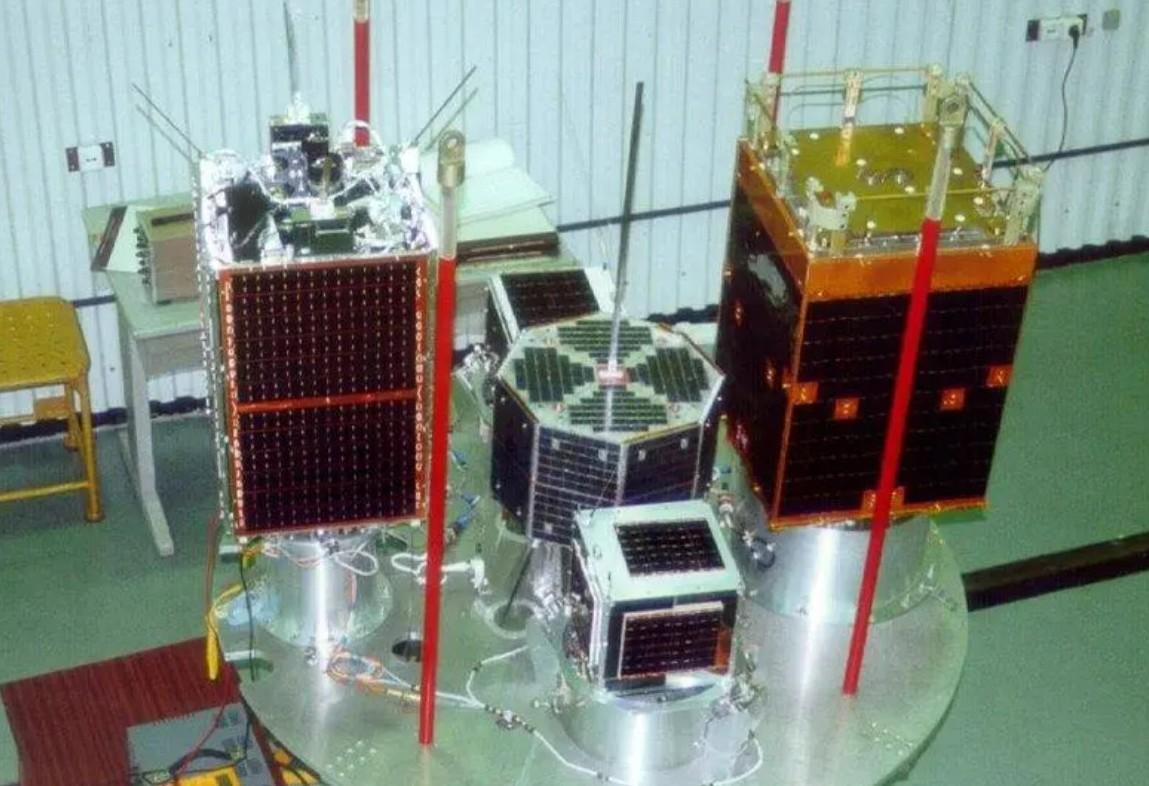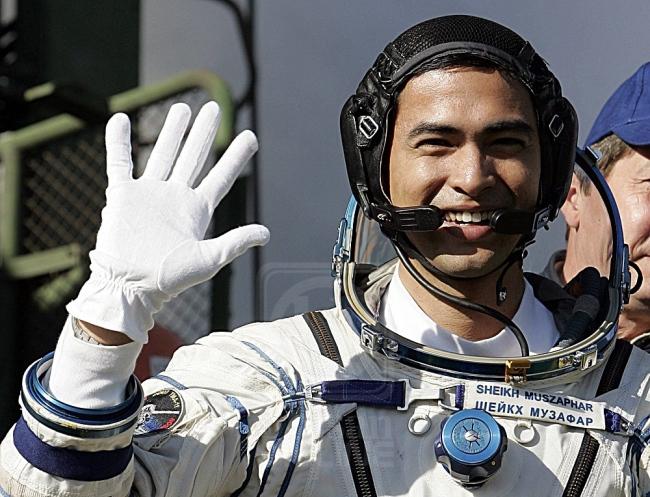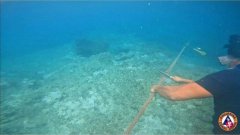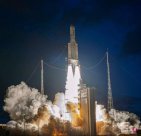
The Malaysian government recently announced that the rocket launch site will be built in 2026, and the relevant space industry will be fully promoted to cooperate with the official industrial transformation strategy.The opposition party states that the government should take care of people's livelihoods and should not be high.However, both aerospace experts and political and economic scholars believe that as long as the resources are distributed and supervised properly, the development of the aerospace industry and the solution of people's livelihood problems can be parallel, and in the long run, it is also beneficial to Malaysia's economic development.
Minister of Science, Crafts and Crafts, Zheng Ligan, Malaysia announced on September 14 this year that the Malaysian Space Administration is studying the feasibility of the construction of a rocket launch site, and is preparing to build the 16th rocket launch site in the world in 2026.He emphasized that the establishment of a rocket launch site is a private financing project and does not spend money by the government and the people; the central government will be responsible for supervision to ensure that the project complies with international and Malaysian laws.
Zheng Ligan's announcement immediately aroused criticism of the opposition National Alliance (referred to as the National Alliance), saying that officials should not introduce such huge projects at this time, and they should use funds in revitalizing the economy and funding for vulnerable groups.
Minister of Science and Technology Zheng Ligan: Malaysia has economic conditions to develop aerospace industry
Criticism of "so high and far away" and "disregarding the people's livelihood", Zheng Li generously pointed out that these accusations have no basis, because the government plans to raise funds to build rocket launch places by private enterprises, so they will not use government funds.
Zheng Ligan also said in an interview with Lianhe Zaobao: "Many people have misunderstood the development of the rocket launch field like sending astronauts to space. In fact, it is not the case. Building a launch site is to meet the global needs of remote sensing satellites and communication satellites.And provide satellite launch services for other countries, drive domestic economic development by creating a new economic field, and create more high -paying job opportunities. "
In Zheng Ligan's view, Malaysia has the economic conditions in the field of aerospace.He pointed out that many strong scientific and technological powers began to develop the aerospace industry in the early stages of economic development.For example, during the period of the 1950s, China began to develop the aerospace business."South Korea began to independently develop aerospace technology in 1989. At that time, their GDP was more than US $ 200 billion (about S $ 272.7 billion). Malaysia's GDP last year has exceeded 400 billion US dollars."
Affected by the weak global demand, domestic political instability, and bad weather, the economic development of Malaysia in recent years has not been particularly bright.Although the government has allocated huge amounts of assistance to disadvantaged groups, some people are still unbearable.
Economist: The development of the aerospace industry and solving the problem of people's livelihood is not the second choice
Malaysian Economist Cai Zhaoyuan reminded that economic assistance must be balanced between the development of the country, and many development plans can actually help the people in the long run.
Cai Zhaoyuan's interview for example: "For example, if the government wants to attract foreign capital, it must provide more convenience and preferential supporting facilities. Of course, these are all costs. But when foreign capital comes inSolving the people's problems in the long run. "
He also said: "Similarly, if the official development of the aerospace industry will directly or indirectly increase people's income and living standards, and college graduates in related fields will have more employment opportunities." Cai Zhaoyuan emphasized that the development of the aerospace industry and solving people's livelihood problems are not only one of them.The government must properly distribute financial resources to various policies such as short -term, medium and long -term.Short -term policies, including the government's subsidies for disadvantaged groups, and subsidies for essential supplies such as fuel and chai oil and salt, "but these (subsidies) cannot be given for a long time."
It is more important to solve the problem of people's livelihood and increase people's income.To increase income, it is necessary to attract foreign investment to develop economy.According to the 2030 new industrial blueprint released by Prime Minister Anhua on September 1, the next industrial development direction must be a "high value and high growth" project, including the space industry.
Huang Jinfa, a political scholar of Malaysia Shuangwei University, told Lianhe Morning Post that the Rocket launch site for the development of the Ministry of Science, Crafts and Innovation (referred to as the Ministry of Science and Technology) has nothing to do with whether other departments have good people's livelihood.
Scholars: If the upgrading of the surrounding industries and technology can help the national high -tech development
He said: "Is the rocket launch site so high and far away, we should see specific plans and expenses. The inspection details are the basic principles, because even if it is a plan to take care of the people's livelihood, if there is no detailed plan, it may be so high."
Scholars of interviewees are more concerned about whether the government can implement the plan exactly.Pan Yongqiang, a political scholar in Malaysia, pointed out that if the rocket launch site can drive the surrounding industries and technology upgrades, strengthen research and development and education, it can indeed help the country's high -tech development.But this "requires good policy planning and investment in experts, and it is necessary to study and implement it carefully and professional."
Huang Jinfa urged people to professionalize and supervise the government, including requiring the Minister to publish details and request the Congress to supervise it carefully, and "ensure that the plan will not be a white elephant.""They cannot deny the plan for the three words" Gu Min Sheng "or potential dissatisfaction with the country."
Thailand and Indonesia also grabbed the launch site but the Malaysian conditions are better.
To develop the rocket launch field, it is necessary to face fierce competition between Thailand and neighboring countries such as Thailand and Indonesia.
On February 13 this year, the Thai government signed an agreement with the South Korean Aviation Universe Research Institute to conduct a three -year feasibility study of the construction of a rocket launch site in Thailand.
The Indonesian National Aerospace Research Institute (LAPAN) announced as early as November 2019 that it is preparing to build a large rocket launch site in Biak Island in West Pabua, and it is planned to start a rocket in 2024.However, due to land acquisition, funds and technology, the plan is behind.
Indonesia reserved 100 hectares of land in northern Biak Island in the 1980s.Biak Island is close to the equator, and the east coast is facing the Pacific Ocean. It is regarded as an ideal place to build a rocket launch site.
Expert: Malaysia near the equator is an ideal rocket launch place
All countries have built the rocket launch site as closest to the equator as much as possible.This is because the static track of the earth is located 35,800 kilometers above the equator.The closer the rocket launch location, the more the satellite can directly enter the static track without having to consume more fuel to change orbit. The Rockets can also use the additional thrust brought by the earth's rotation.This increase (earth rotation thrust) one (reduced fuel consumption) can increase the effective load of the Rockets, and therefore improve efficiency and reduce costs.
Experts believe that the most ideal rocket launch field needs to be between 5 degrees north latitude and 5 degrees south latitude.For example, internationally recognized the best rocket launch field, the Kuru launch site in South America France, is 5 degrees north latitude.Malaysia is located between 1 degree north latitude and 7 degrees north latitude, so the official believes that it is very suitable for the establishment of a rocket launch field.
Siti Harwani MD YUSOFF, a senior lecturer at the School of Aerospace Engineering, Malaysia State University of Science and Technology, told the United Zard that Thailand and Indonesia are indeed developing rocket launch places, but compared with Thailand, the geographical location of Malaysia is even more geographical.Close to equator."The more closer to the emission location of a spacecraft such as rockets, the more you can improve the efficiency of the engine and save costs."
The research field of Sittihawanni includes aerospace task analysis and design, as well as computer calculations in the space environment.She said that compared with Indonesia, Malaysia has more high -tech human resources in the field of cutting -edge technology such as the aerospace industry.
There are currently six public universities in Malaysia with a space -related department and research centers, including Malayan University, Malaysia National University, Craft University, Science University, BottLatin University, and Marla Technology University.Among them, the University of Science and Technology has the School of Aerospace Engineering, and is also a member of the Malaysian Aerospace Industry Association (MAIA).
Semiconductor exports account for 7%of the world and a large number
Sittyha Wanni said that industry -academia cooperation is essential to the development of the aerospace industry, because this can promote education and training in related fields, and to promote the creation, absorption and integration of relevant knowledge through scientific and technological transfer.
Zheng Ligan also pointed out that compared with neighboring countries, Malaysia has a more mature electrical enterprise ecology and can support the needs of the aerospace field.In addition, Malaysia's semiconductor exports currently account for 7%of the total global exports. The colleges and universities have also trained a large number of electrical and electrical engineering professionals. These are the strong foundations of building rocket launch stadiums.
Zheng Ligan believes that in order to train specialists in the field of aerospace, the government must simultaneously develop the aerospace industry and cooperate with enterprises to create a complete ecology, so that after graduation in the field of space engineering, it can enhance technologies in related fields through practice.
Zheng Ligan said that many college schools currently have students studying the Aerospace Engineering Department."While developing the aerospace industry, the government will assist enterprises to connect with college universities, encourage more universities to open relevant departments to train enough talents for enterprises."
The history of the development of Malaysia for 35 years
The development of the Malaysian Aerospace business began in 1988.The then Prime Minister Mahathir government established the remote sensing exploration center (Macres) in August of that year to manage the artificial satellite affairs of Malaysia.

The Space Science Research Bureau (BAKSA) established in May 1993, which was established in May 1993, was the prototype of the Malaysian Space Agency.After the development and expansion of these two institutions, they finally merged into the Malaysian Space Administration (MYSA) in 2019.
The 13 years from 1996 to 2009 can be said to be the booming period of Malaysian aerospace industry.During this period, Malaysia launched five artificial satellites, and the first astronaut Saushara was also sent to the International Space Station by the Russian Alliance Space Ship on October 10, 2007.
However, whether Semoshahua is an astronaut or a space passenger, Russia has different claims with the United States.In 2003, Russia agreed to send a Malaysian astronaut to the space station, and Malaysia agreed to buy 18 Sukhoi fighters with a total value of $ 1 billion.
Russia refers to Sai Muzhahua as a spaceman trained by regular flight plans.However, the United States believes that Semoshahua is only "space flight participants" (that is, "space passenger").

After the Lhasa satellite developed by Malaysia, after the launch of the Falcon Rockets of the American SpaceX company in July 2009, Malaysia's space activity was silent for about 14 years.It was not until June this year that Measat-3D communication satellites were promoted in French Guyana, and the satellites developed by Penang were launched in Russia.
The space industry in 2030 expected revenue to make 2.9 billion yuan in manufacturing 5,000 employment opportunities
The Malaysian government expects that the aerospace industry can bring RM1 billion (about S $ 2.9 billion) revenue to Malaysia in 2030 to create 5,000 employment opportunities and drive 500 aerospace startups.
Zheng Ligan said that the Rocket launcher project will drive the industrial chain of the Malaysian aerospace industry, including the supply and manufacturing, assembly and testing of rockets and satellitesIndustry will settle in Malaysia."This area will create thousands of high salary and high -skilled job opportunities to help retain scientific and technological talents."
He also said: "More importantly, technology companies and personnel of Malaysia will be able to get the technical transfer of investors in this process. This will help the Malaysian space industry to create higher industrial value." If the plan to build a rocket launcher can come true, it may also drive the development of the relevant Malaysian electronics and electrical industries, further enhance the status of Malaysia in the global semiconductor field, and also help promote the transformation of the Malaysian industry, increase capital and technology denselyThe industry no longer relies on cheap labor.
Some critics are worried that the construction of the rocket launch site may damage the environment.However, Zheng Ligan said that any enterprise must conduct environmental assessment reports before building a launch site to ensure that the launch site project will not damage nearby residents and the environment.
He also emphasized that the rocket launch market that private enterprises injected capital and built will be handed over to relevant private enterprises.The role played by the government is to supervise and ensure safety, and ensure that the establishment of space stations has brought development and technological transfer to the domestic aviation industry."Principles of the operation guidance of the Malaysian Aerospace Bureau of the Malaysian Aerospace Bureau of the Ministry of Science and Technology, the Ministry of Science and Technology will be announced next time."



